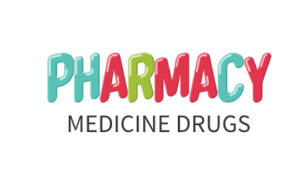Inflammation Definition | Basic Mechanism Involved In The Process Of Inflammation
Inflammation is a critical homeostatic process that is activated by cellular injury
regardless of the mechanism of that injury. Inflammation is essentially local in nature,
although cellular mediators released during inflammation may initiate systemic responses as
well. Systemic inflammatory response syndrome is the most extreme form of inflammatory
response and may be life threatening in critically ill patients. This syndrome nearly always
occurs in the setting of systemic infection and is termed as sepsis.
Definition Of Inflammation
Inflammation is defined or ‘Inflammation Definition’ as “the local response of living mammalian tissues to injury due to any agent”. It is a body defense reaction in order to eliminate or limit the spread of injurious agent, followed by removal of the necrosed cells and tissues. Inflammatory processes are defensive or adaptive by design; however they may contribute to distressing clinical manifestations of disease. At the same time they are helping to eradicate it. Inflammation is the body’s attempt of self-protection; the aim being to remove harmful stimuli, including damaged cells, irritants, or pathogens and begin the healing process. Inflammation does not mean infection, even when an infection causes inflammation. Infection is caused by a bacterium, virus or fungus, while inflammation is the body’s response to it. Any injury, including an invasion by micro-organisms, causes inflammation in the affected area. Inflammation, a complex reaction, results from many different conditions. The damaged tissue releases substances that cause inflammation and that direct the immune system to do the following:
- Attack and kill any invaders.
- Dispose off dead and damaged tissue.
- Begin the process of repair.
Etiology of Inflammation
The agents causing inflammation may be as follows:
- 1. Physical agents: Heat, cold, radiation and mechanical trauma
- 2. Chemical agents: Organic and inorganic poisons.
- 3. Infective agents: Bacteria, virus and their toxins.
- 4. Immunological agents: Cell mediated and antigen antibody reaction.
CARDINAL SIGNS OF INFLAMMATION
The Roman writer Celsus in 1st Century A.D. named the famous four cardinal signs of inflammation:
- Rubor: Latin term for “redness”. This is because the capillaries are filled up with more blood than usual.
- Tumor: a Latin term for “swelling”. Caused by an accumulation of fluid.
- Calor: Latin term for “heat”. As with the reason for the redness, more blood in the affected area makes it feel hot to the touch.
- Dolor: Latin term for “pain”. The inflamed area is likely to be painful, especially when touched. Chemicals that stimulate nerve endings are released, making the area much more sensitive.
- To these, fifth sign function laesa (loss of function) was later added by Virchow
TYPES OF INFLAMMATION
Depending upon the defense capacity of the host and duration of response,
inflammation can be classified as acute or chronic.
-
1. Acute inflammation:
Acute inflammation is of short duration and represents the early body reaction and is usually followed by healing. Examples of diseases, conditions and
situations which can result in acute inflammation include:
- Acute bronchitis
- Sore throat from a cold or flu
- A scratch/cut on the skin
- Acute appendicitis
- Acute dermatitis
- Acute tonsillitis
- Acute infective meningitis
- Acute sinusitis
-
2. Chronic inflammation:
Chronic inflammation is of a longer duration and occurs either after the causative agents of acute inflammation persists for a long time or the stimulus that induces chronic inflammation from the beginning. The characteristic features of chronic
inflammation are presence of chronic inflammatory cells such as lymphocytes,
plasma cells and macrophages.Macrophage (phagocytic cells) derived from monocyte, walls of blood vessels and in loose connective tissue. They interact with lymphocytes to facilitate antibody production.
Examples of diseases and conditions with chronic inflammation include:
- Asthma
- Chronic peptic ulcer
- Tuberculosis
- Rheumatoid arthritis
- Chronic periodontitis
- Ulcerative colitis and Crohn’s disease
- Chronic sinusitis
- Chronic active hepatitis.
Related Reads:
Intracellular Accumulation | Calcification | Electrolytes
Mechanism Involved In Inflammation | Vascular Events | Cellular Events
MORPHOLOGY OF CELL INJURY | ADAPTIVE CHANGES | CELLULAR SWELLING

